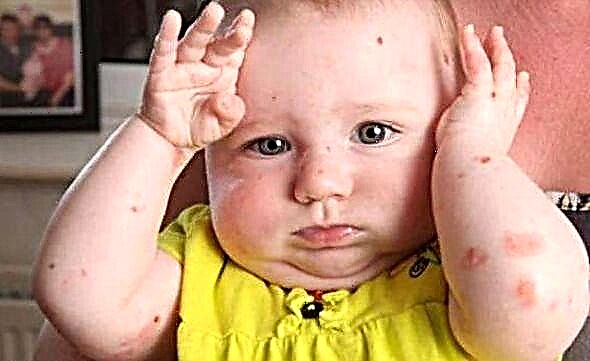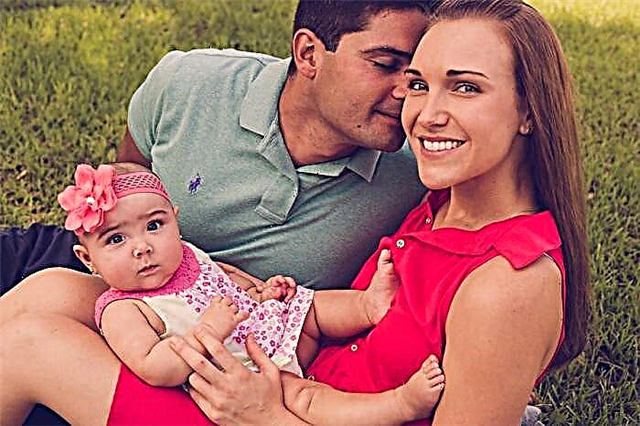From the very birth of their baby, mothers and fathers are faced with the need to use antihistamines. Whether it's preparations for a vaccination or unexpected allergic rashes. Therefore, the question of how to give Fenistil to an infant with allergies is not at all idle. In this article, we will analyze the main clinical situations in which it is necessary to take antiallergic medications, using the example of Fenistil, as one of the most popular antihistamines.
What is this medicine - Fenistil?
Fenistil is included in the group of antihistamines, which are usually divided into two main categories:
- antihistamine receptor blockers. Prevent the appearance and significantly facilitate the course of atopic processes in the body. There are two main generations of histamine receptor blockers. The first generation includes classic antihistamines with a strong hypnotic effect. The second generation includes strong antiallergic drugs that have a weak effect on the nervous system. Fenistil (dimetindene) belongs to the group of first-generation drugs;
- topical antihistamines. It is customary to refer Fenistil gel to this pharmacological group of drugs. These medicinal gels and emulsions have the ability to block local tissue receptors with a biologically active substance, reduce capillary permeability, and have an anti-inflammatory effect.
 The meaning of the action of antihistamines is to disable receptors that histamine binds to during an allergic immune response. Histamine is a biologically active substance that increases vascular permeability.
The meaning of the action of antihistamines is to disable receptors that histamine binds to during an allergic immune response. Histamine is a biologically active substance that increases vascular permeability.
Clinically, we see the formation of rashes on a bright red background. The action of the drug is fast, but a rather large dose is required to achieve a pronounced clinical effect, since the binding to receptor proteins is reversible and competitive.
This will certainly lead to the fact that this class of drugs provokes unwanted and dangerous side effects.
These reactions are due to the following factors:
- indiscriminate blockade of receptors, in particular m-cholinergic receptors. This effect is manifested in the appearance of dryness of the mucous membranes, increased intraocular pressure;
- possible development of ventricular arrhythmias due to quinine-like action on the heart muscle;
- depressing effect on the brain with the development of nervousness, drowsiness and lethargy.
When should I give Fenistil to babies with allergies?
In pediatrics, there are not many cases when this drug can be prescribed. Most often it is preparation for vaccination, treatment of atopic and allergic contact dermatitis, urticaria, angioedema, insect allergy.
Find out in more detail about where the allergic rash comes from in children and how to properly treat it, from the article of the allergist-immunologist.
In what cases is the use of Fenistil dangerous?
There are few contraindications to the use of the drug, but you should know about them:
- hypersensitivity to the components of the product;
- age up to one month;
- prematurity of the child;
- glaucoma;
- bronchial asthma;
- inflammatory purulent processes on the skin (for gel).
In what forms is Fenistil produced?
In children's practice, Fenistil is used in the form of drops for oral administration and a gel for external use.
The gel is characterized by very good skin penetration. The maximum possible concentration in the blood serum after taking the drug is reached after 2 hours. The drug is metabolized in the liver. Excretion - with bile and urine.
How is Fenistil in the form of drops dosed?
The drug can be recommended for a baby from one month of age.
 The dose of Fenistil is determined by the doctor, based on the child's body weight and state of health. There are schemes for calculating the dose of this drug for premature babies.
The dose of Fenistil is determined by the doctor, based on the child's body weight and state of health. There are schemes for calculating the dose of this drug for premature babies.
The maximum daily dose of the drug in the form of drops should not exceed two drops per kilogram of the patient's body weight and should be divided into three doses. From the first month to one year of age, it is recommended from 3 to 10 drops per dose. After 1 year and up to three years, the dose is increased to 15 drops per dose. From the age of three they give 20 drops.
Before taking, the medicine can be dissolved in tea, compote or breast milk, avoiding heating the medicine. The drops have a pleasant taste and are well tolerated even by babies.
In what situations is Fenistil gel for babies used for allergies?
The drug in a gel form is used in children with itchy atopic rashes, insect bites, and some types of urticaria. Fenistil is used with caution in premature babies. Fenistil gel is used when the child reaches one month of age.
It is forbidden to apply Fenistil gel on extensive skin surfaces and in the presence of inflammation. After smearing the gel on the child's skin, avoid direct sunlight, as this leads to the development of photodermatitis.
Dosing regimen of Fenistil gel in infants
Fenistil is applied to areas of skin rashes up to four times a day. In the absence of effect, simultaneous use with drops is desirable.
What side effects can there be in children when using the drug Fenistil?
Most often in the practice of an allergist, side effects are encountered when using drops for oral administration. These are lethargy, anxiety, dizziness, nervousness.

The child may feel nausea, dry mouth. Gel for external use can cause contact dermatitis, flaking, dry skin. All side effects should be reported to the treating doctor.
What to do in case of an overdose of Fenistil medication?
An overdose of Fenistil can manifest itself in a child as blurred consciousness, pronounced drowsiness, convulsions, and a drop in blood pressure.
In this case, parents should immediately call an ambulance. Before the ambulance arrives, it is necessary to remain calm, try to induce vomiting, and give the child activated charcoal.
With the use of what medications is it undesirable to combine the use of fenistil?
- Fenistil enhances the effect of sleeping pills and psychotropic drugs.
- MAO inhibitors (antidepressants), when used simultaneously with histamine blockers, have a depressing effect on the central nervous system.
- When Fenistil is combined with m-anticholinergics, the risk of developing or aggravating glaucoma increases.
What should be remembered when giving Fenistil to a child?
It is important to follow a few rules:
- the medicine will not help if the itching is caused by a malfunction of the liver;
- avoid direct sunlight on skin areas with Fenistil gel;
- when heated, the medicine loses its healing properties, so do not add Fenistil drops to a hot liquid.
How to use Fenistil for various diseases?
- Application of Fenistil in preparation for vaccination. Children of the first half of life with manifestations of atopic, diaper dermatitis, numular eczema, gneiss should be vaccinated during remission of the disease with medication. Fenistil is prescribed in an age-specific dosage in the form of drops two days before and within four days after vaccination.
- Fenistil for atopic dermatitis. Both forms of the drug are used. Fenistil is usually prescribed in a short course to eliminate intense skin itching and improve the quality of night sleep. Long-term continuous use of Fenistil is not recommended due to impaired cognitive functions of the brain in children. If the child also suffers from bronchial asthma and allergic rhinitis, then the use of Fenistil will be inappropriate due to its atropine-like action.
- Fenistil for various types of urticaria. Foreign authors advise applying Fenistil gel topically to blisters with urticaria from pressure. Fenistil drops will help to cope with itchy skin with urticarial rashes (blisters).
- Fenistil gel for allergy to insect bites in children. In the summer season, even newborns can suffer from a significantly pronounced allergic reaction to insect bites. The bite site will be less itchy and swollen after the antihistamine gel is applied. Fenistil gel can be applied to the skin three times during the day.
Thus, we examined the main options for using Fenistil in children.
What do parents need to remember?
- Fenistil is included in the group of antihistamines.
- When to give Fenistil to a baby: preparation for vaccination, treatment of allergic contact and atopic dermatitis, urticaria from pressure, angioedema, insect allergy.
- In children's practice, Fenistil is often used in the form of drops and gel for external topical application.
- The drug in the form of a gel is used in children with itchy atopic rashes, insect bites, and some forms of urticaria.
- Fenistil is prescribed in an age-specific dosage in the form of drops a couple of days before and within four days after vaccination.
- The most common side effects occur when using drops for oral administration. These are lethargy, anxiety, dizziness, nervousness.
The most important thing that needs to be learned is that Fenistil is a fairly effective drug for the treatment of manifestations of allergic ailments in children, but, unfortunately, it is not devoid of serious undesirable effects. Therefore, the purpose of the doctor's prescription of this drug should always be justified.



